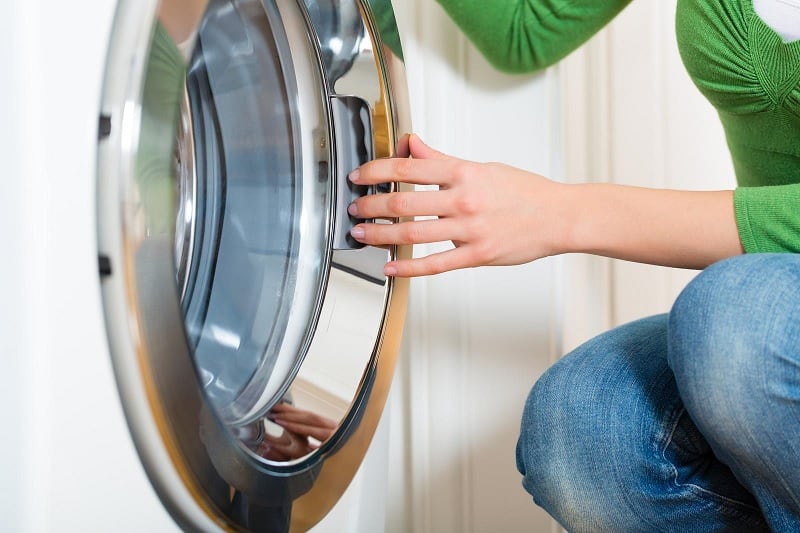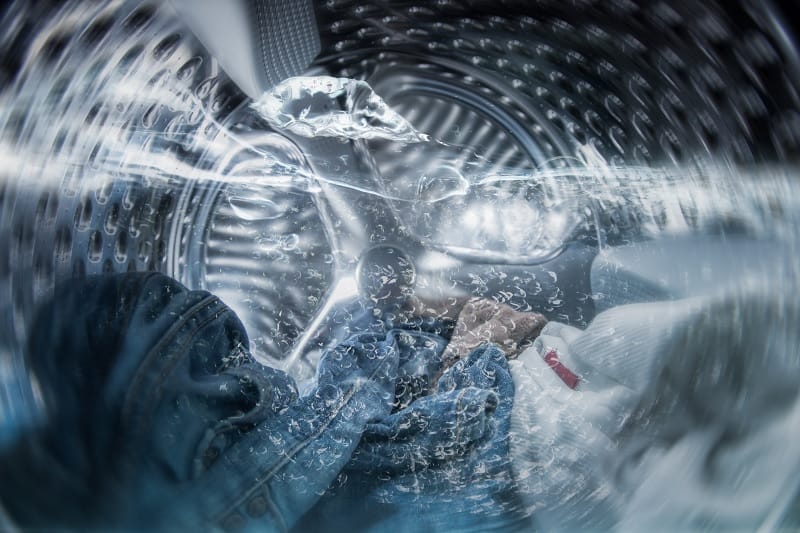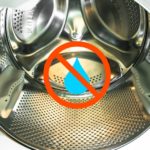A washing machine door stuck closed is a common complaint, and often, this is because the machine detects that there is still water in the drum. Not only is this annoying and inconvenient, but both the drum and the laundry trapped inside can end up smelling stagnant and mouldy.
Possible Causes
If your washing machine has stopped and the drum is still full of water, there are a couple of common causes that you should be aware of. A loss of power is a common cause, whether that is due to a power cut or a tripped fuse.
Beyond power issues, drainage problems are another common cause. This could be due to a technical fault, or simply because of a blockage in the drainage hose or filter.
Before You Open the Door
Regardless of the reason that your washing machine is full of water when you are attempting to open it, you need to ensure that you take adequate precautions to protect the rest of your home from water damage.
Lay towels under the machine, and if the drum is full, find large pans or containers. It is unlikely that you will manage to catch all the water, but at least will be able to stop most of the water from spilling onto the floor.
At this stage, it is also worth pulling the machine forward, if possible, to give you access to the back of the machine. You will likely need to access the drain hose at the back of the washing machine and moving the machine on a dry floor is safer than trying to move it on a wet one.
Draining Away the Water
Once you have made your preparations, it’s time to drain as much of the water out of the machine as possible. There are a couple of ways to do this, and the one that works for you will depend on your machine and what has caused the problem.
If your problem was caused by a power cut that interrupted the cycle, you may be able to run a drain and spin cycle to empty out the excess water. If this isn’t the or it doesn’t work case, you will need to drain the water manually.
Before moving on, unplug the washing machine and stash the power cord somewhere safe to prevent it from either getting wet, or getting stuck under the washing machine.
Drain hose
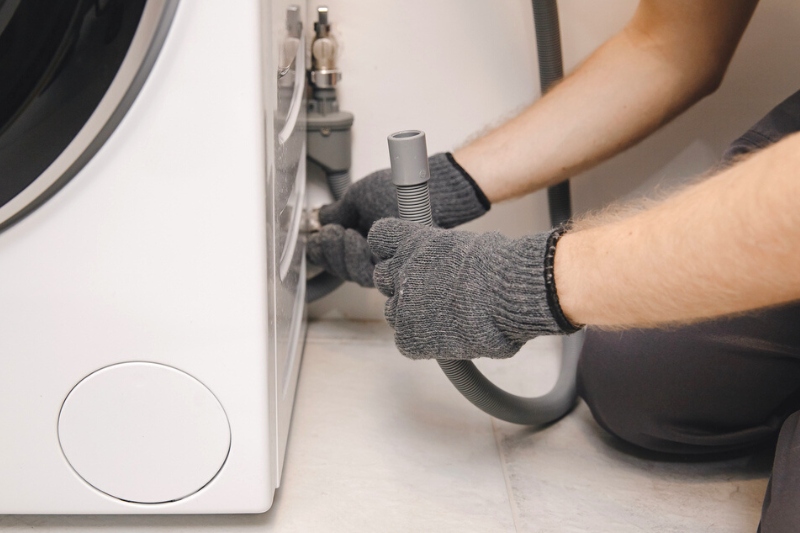
Go to the back of the washing machine and locate the drain hose. This is the hose that does not connect to a water supply on the wall.
Depending on your machine, either unscrew the end of pull it out of its seal. Keep the end of the hose raised up to avoid spills, and lower carefully into a bucket or container that is lower than the machine’s door. Most of the water should flood out.
If this technique does not work, you may have a blockage in the hose, and this will need addressing after the machine has been drained.
You may be able to clear the blockage with hot water if it is caused by a build-up of debris or detergent. If hot water isn’t quite enough, try a commercial drain unblocker.
Alternatively, if the blockage is more serious or has been caused by a coin or other small item getting wedged, you can clear the blockage using a drain snake and manually pushing it through.
Pump filter
Using the drain hose will drain most of the water from the machine, however there is likely to still be some in the drum. To drain this away, move back around to the front of the washing machine and locate the pump filter. You can usually access this behind the panel at the bottom of the washing machine.
Before moving the filter, make sure that you have something underneath the machine to catch the water; plenty of towels or large oven trays work well here.
Slowly turn the filter counter clockwise by hand. It is crucial that you turn the filter slowly to enable you to better control the speed that the water floods out at.
Once the water has been drained, remove the filter completely. Remove any solid debris that has built up (small objects such as coins and hair pins can easily get trapped here!) and wash the filter thoroughly putting it back.
After draining
Once the water has been drained away, dispose of it carefully and mop up any spills to avoid accidents. Once you are satisfied the area is dry and safe, plug the machine back in. Some machines may automatically unlock once the water has been drained away. If yours doesn’t automatically unlock, you may need to override it.
Opening a Manual Lock
Some washing machines with stuck manual locks can be easily opened using garden wire, fishing line, or thick string. This technique only works on washing machines with doors where the handle faces into the circle of the door.
Wrap your chosen wire or string around the edge of the door, crossing the ends over towards the hinges. Firmly pull the strings; this should put pressure on the door’s catch, releasing the door.
If the door’s handle faces the other way, unscrew, and lift away the top of the washing machine. Locate the door’s catch, and push on it to release the door.
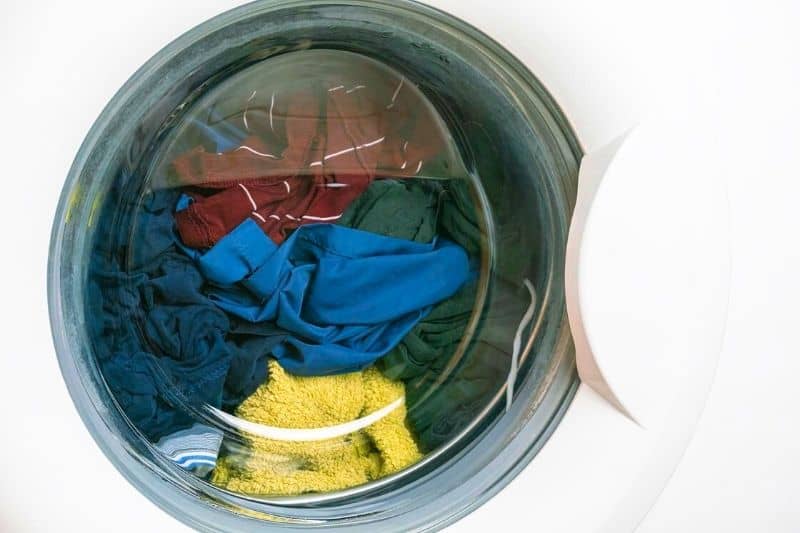
Opening an Electric Lock
If the washing machine has an electric lock and it hasn’t disengaged whilst the machine has been turned off, you may need to manually override it.
Some machines with electric locks have a plastic tab behind the panel at the base of the washing machine that can be used to override the catch. Inspect the top of the area that you have exposed, looking for a plastic tab.
If your machine has one, it is usually in a contrasting colour to the rest of the machine to make it easy to find. Once you have found the tab, pull it down whilst simultaneously pulling on the door handle.
If this does not work or your machine does not have this tab, you may need to contact either the manufacturer of the machine for technical support, or a technician as there may also be a fault with the locking mechanism.

Lover of coffee, painting, and all things cute and fluffy. I’m always on the lookout for easier, more gentle ways to tackle awful household chores.
